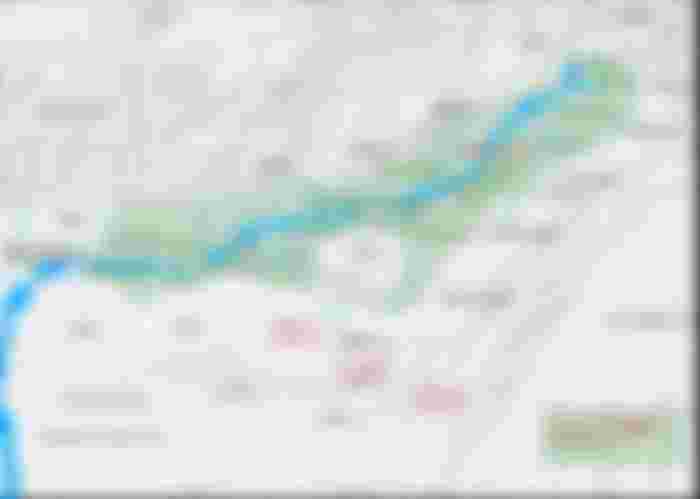The story is of a land port rich marginal district of the country. At one time of the year, Kanchenjunga peeks out by lighting a torch. Tea gardens have also sprung up here in the recent past. Orange cultivation is not lagging behind. The state-of-the-art and picturesque Asian Highway passes through the heart of the city. Blessed by the Himalayas, it is also known as 'Himalaya Kanya' in the geographical nickname.

The oldest road connecting China with Bangladesh by road enters the country through this district, which was connected to the Grand Trunk Road by Emperor Sher Shah. It is now lost in the riverbed. In the recent past, the lowest temperature in the country was recorded in this district (2.6 degrees Celsius). Even in such a bone-chilling winter, or a pair of people from the other side to entertain the guests! It is said that as soon as the asylum seekers go on a difficult winter night, they sit in the poshara of pithapuli. The archeological importance of the district is not less.
Even after so many things, Panchagarh has remained underrated for some reason!
The history of Bengali prose, however, speaks differently. If you keep your eyes, ears and mind open, you will understand that the prose-loving Bangla has welcomed Panchagarh.
1555 The Middle Ages is clearly the epoch in Bengali literature. To put it more clearly, the post-Chaitanya era. Bengali prose did not start then. Until the 1760's, Bengali literature was inherent in poetry. Prose writing comes much later. It can be assumed that poetic language was used in human life before him. So what happened in 1555? Although not the beginning of prose, that special event is the hint of prose in language.
According to experts, the two old letters are direct documents in this regard. The first was sent by Maharaja Naranarayana Bhup Ahomraj Chukumdhfa of Kochbihar. In reply, Ahomraj became angry and wrote a return letter to Naranarayana.
Naranarayana Bhupa's letter to Ahomraj,
Writing activities. This is my good fortune. I wish you all the best. Now, when the letter of your satisfaction is passed, the seeds of mutual love continue to germinate. In my duty to you, that growth will flourish. We are in that initiative. You should do this. Don't worry, you know. What more can I write? I am sending Satananda Karmi, Rameshwar Sharma, Kalketu and Dhumasaddar Udvand Chaulia, Shyamrai Imrak. Understand all the news in Tamra's face and say goodbye. Along with other lawyers, Ghuri 2, Dhanu 1, Chenga Matsya 1, Jor, Balich 1, Zakai 1, Sari 5 Khan have gone through all these. I will send you more news. In your sense, Sandesh Gomcheng 1, Chit 5, Ghagri 10, Krishnachamar 20, Shuklachamar 10.
Iti Shanka is 1477 months old.
The custom of sending gifts by mail is very old. However, in this case, the gift sent by the king of Kochbihar is insulting to Chukumfar.

In response, the angry Ahomraj wrote,
I have heard that in the country of Kochhar, the eyebrows of human beings will be raised in Manu. In my country, however, Kauri uses vultures. The shelves that this fish has brought are not used by my people. Kochhar Nichina knows his taste in Haram Khorhe. The other one who sent this row is wearing the shell of my country. Zakairo gave Zakai three mistakes. There are three corners of the world. But I can't stand the water. When zakai baralai melts in the water, the buri dies.
In the farewell part of the first letter, write the date as Shakabdar. Shakabda began 78 years after the birth of Christ. Accordingly, the month of Ashar in 1477 Shakabd is referring to the year 1555. A linguistic analysis of the two letters reveals the scent of the Ahmiya language.

The characteristics of Ahmiya are especially evident in the language of the second letter, which is very natural in the writings of Ahomraj. But in the language of the letter of the king of Kochbihar, the characteristic of Ahmiya is not fully revealed.
It is to be noted that Kochbihar is a district of West Bengal, and Ahmiya is the language of the Ahom kingdom. The whole of present day Panchagarh, including North Bengal, Kochbihar, Jalpaiguri, in terms of geographical location adjoining these Ahom kingdoms.
Phonological environment, words, sentences, and even linguistic assimilation where applicable, as well as natural instincts for people in two different areas. That is why Hindi has an influence on the folk languages of northern Bengal (especially Rangpur, Gaibandha), including Panchagarh.
Reading the two letters with an inquisitive eye, one finds the existence of Sanskrit (Krishna, Shukla, Vardhitakah, Karmi, etc.) influences in the first. Bengali is more Sanskritized than Ahmiya. But in the second letter there is no influence of Sanskrit, but little influence of Hindi. And the last sentence hints at political intimidation. The farthest thought is that in an era where prose was not in vogue, there was such a prominent sentence in the language of a counter letter. The development of rhetoric in Bengali poetry did not happen properly at that time, but how much power of prose can be imagined in a letter!
Chandrabindu is used arbitrarily in the words 'Shank' used in the date instruction of the first letter and 'Shunichilon', 'Kharchaihan', 'Thai' in the second letter. Such a tendency is normal in the Bengal of far-north Bengal. Such as- tah, kunkila, bamboo, khonj etc.
Again in the second letter, the sound of the two words 'Desalaiko' and 'Barlai' is influenced by Ahmiya. The Bengalis of this region are not free from this influence. For example, it is said that I have given my word to Mui Badu.
Panchagarh was once part of Kamrup and Kamata kingdoms. The Bengali dialect of this region was known as Kamatapuri, Kamarupi etc. The name Kamata became extinct long ago. And Kamrup is a district in the present state of Assam. Again Rajbangshi language cannot be spoken, because there is a community with the same name. Although the Rajbangshis follow their own language style, the language of Panchagarh is also observed. During the naming ceremony, it is seen that the person who was born on Wednesday is popularly called Budhai. Nevertheless, on the whole, the name of the language of far-north Bengal is reasonable.
Although no written material has been found in the Dark Ages of Bengali literature (one and a half to two hundred years of the juncture of the ancient and the Middle Ages), there is no way to say that the language was at a standstill at this time. Experts are of the opinion that some linguistic features which are not prevalent in present day Bengal still exist in the language of far-north Bengal. It goes without saying that the language of Panchagarh also possesses these peculiarities. The discovery of the ancient Bengali language Charyapadas in the Himalayas is the land of Bangladesh near North Bengal at the foot of the Himalayas. In that sense, it is normal to have the practice of Charyapada language in this area.

Dr. Sukumar Sen said that Bengali language was used in Kochbihar, Assam, Kachar and Bhutan in its infancy. The Devaraja of Bhutan had an experienced munshi in Bengali.
It is no exaggeration to say that the ancient Bengali language, like the Asian Highway, entered the delta through Panchagarh. The Bengali language is the lifeblood of Bengal. It has been said at the beginning that Panchagarh has remained underrated for so many reasons. I don't want to think that Panchagarh is underrated any more in my gratitude for showing the way at my own risk without losing the evening language of the Charyaps.
Thanks to everyone for reading my article



